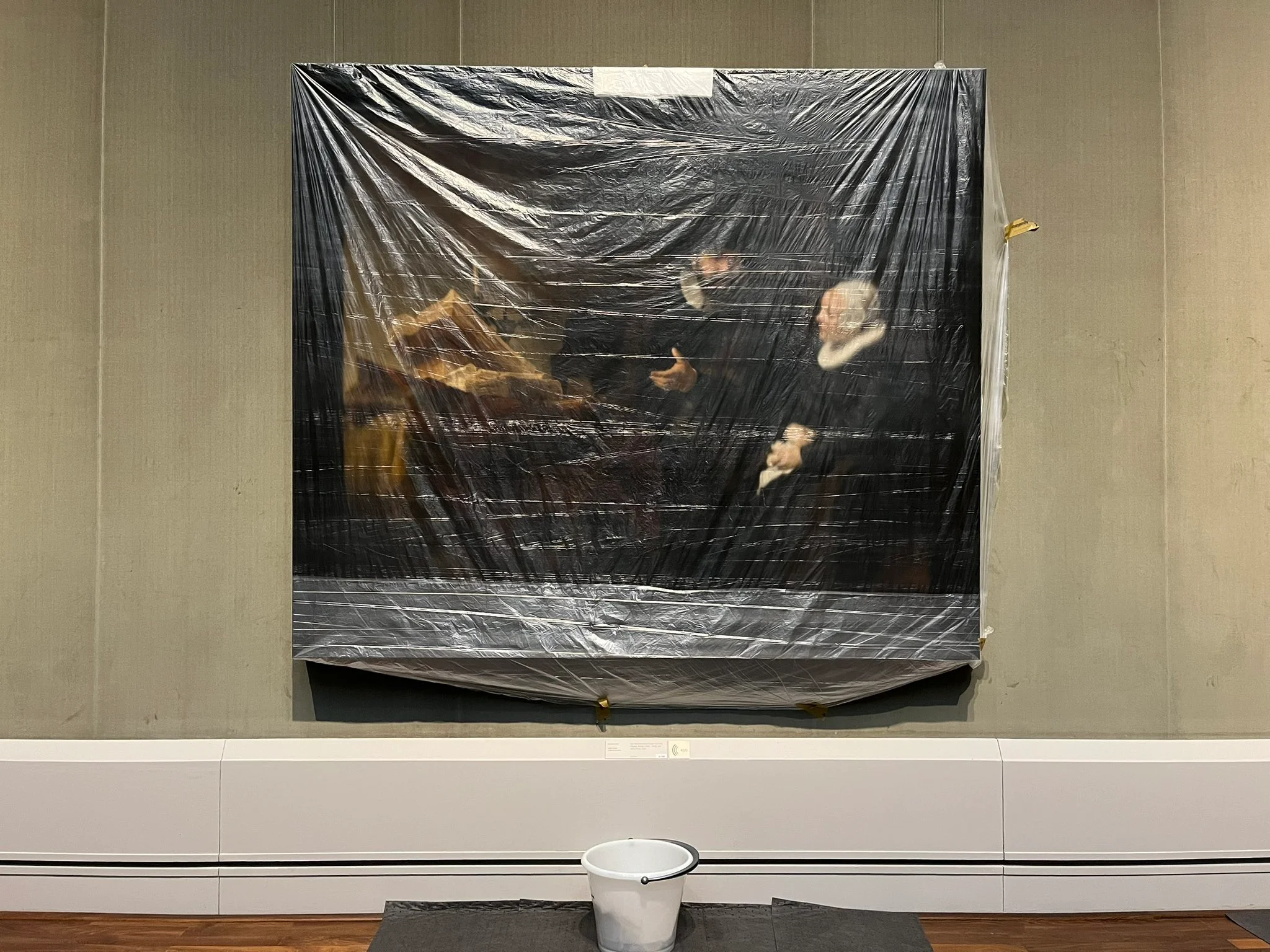
David Grubbs
On June 23, as heavy rains in Germany flooded streets and shut down rail transportation, staff at Berlin’s Gemäldegalerie taped up some plastic sheeting to protect a painting by Rembrandt from a leak.
“A monumental Rembrandt covered in plastic and duct tape while a steady patter of drops land in a bucket an inch or two in front of the painting. Stressing me out,” David Grubbs, a professor at Brooklyn College who noticed the leak at the Berlin museum last week, wrote on Twitter.
The painting behind the plastic is Portrait of the Mennonite Preacher Cornelius Claesz Anslo and his Wife Aaltje Gerritsdr Shouten (1641). The work was commissioned by Cornelius Claesz Anslo, a wealthy Dutch shipowner and cloth owner on the occasion of buying a new house. In the painting, his role as a preacher is highlighted as he gestures to an open book while his wife attentively listens to his lecture.
This is one of twenty works by Rembrandt that the museum has, alongside its rich collection of other Dutch masters like Petrus Christus and Vermeer.
As Grubbs’s photo began to circulate the internet, commentators pointed out a striking parallel to the works of David Hammons, who has produced canvases covered with tarps, garbage bags, and even sheets of plywood, allowing highly obstructed views of the paintings underneath.
This is not the first time that a museum’s collection had been threatened by rainfall this year. After catastrophic flooding in the Emilia-Romagna region of Italy, museums around the country bumped up entry ticket prices by a euro to help put together a $1 billion dollar aid package intended to salvage what remains of the collections of art and artifacts held in local museums impacted by the flooding. At the time, eco-activists with Ultima Generazione dyed the Trevi Fountain black to bring awareness to the damage that climate change–related weather events will wreak on the country’s precious culture.
“I’ve decided to do civil disobedience because the horrible tragedy experienced in Emilia Romagna is a warning of the dark future that awaits humanity, made up of drought alternating with increasingly frequent and violent floods,” said nineteen-year-old activist Mattia in a press release published by Ultima Generazione.
Last year, a so-called “rain-bomb” brought a similar crisis to Australia, where cultural centers, museums, and galleries also lost art to the floods.
A Gemäldegalerie spokesperson did not respond to request for comment.


